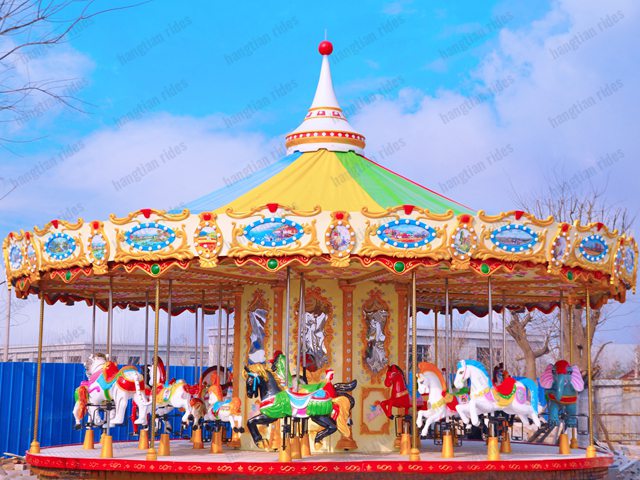Key Considerations for Purchasing Amusement Rides: A Comprehensive Guide
When investing in
amusement rides for sale, whether for a theme park, family entertainment center, or community playground, thorough evaluation is critical to ensure safety, profitability, and long-term success. Below are essential factors to consider before making a purchase decision.
1. Safety Compliance and Certification
Safety should be the top priority when selecting amusement rides. According to regulatory requirements such as “Large Amusement Rides Safety Supervision Regulations”, operators must verify that rides have passed inspections by authorized(special equipment inspection agencies) .
2. Target Audience and Age Appropriateness
Different rides cater to distinct age groups. For example, gentle
carousels or small-scale(
spinning octopus rides) suit young children, while thrill rides like
roller coasters appeal to teens and adults . Consider the demographics of your visitors—families with toddlers may require low-speed, enclosed rides, whereas adventure parks might prioritize high-thrill attractions with strict height/weight restrictions. Aligning ride design with your audience ensures higher engagement and repeat visits.
3. Space Requirements and Installation Logistics
Evaluate your venue’s available space to determine ride dimensions and layout. (large amusement rides) like
Ferris wheels or roller coasters demand extensive ground area and structural support, while modular rides (e.g., portable/
bungee towers) offer flexibility for smaller spaces .
4. Durability, Materials, and Maintenance
Opt for rides constructed from high-quality, weather-resistant materials (e.g., galvanized steel, fiberglass) to withstand heavy usage and outdoor conditions .
5. Operational Costs and Profitability
Calculate long-term expenses, including energy consumption, staffing, insurance, and repairs. Rides with high energy efficiency or low labor requirements (e.g., automated ticketing systems) can reduce overheads. Assess the ride’s capacity and throughput—rides with higher per-hour passenger numbers (e.g., 24-seat/carousels) maximize revenue potential. Additionally, consider add-on features like LED lighting or themed branding to enhance attractiveness and justify premium pricing .
6. Manufacturer Reputation and After-Sales Support
Choose reputable manufacturers with a proven track record in the industry. Research customer reviews, case studies, and certifications to gauge reliability. Ensure the supplier offers comprehensive after-sales services, including installation guidance, staff training, and emergency repair support .
7. Legal and Regulatory Compliance
Familiarize yourself with local, national, and international regulations governing amusement rides. For example, China mandates that operators obtain (operational qualifications) and conduct (periodic inspections) . In the EU, rides must comply with EN 13814 standards. Non-compliance can lead to fines, closure, or legal action in the event of accidents.
8. Accessibility and Inclusivity
Incorporate rides suitable for visitors with disabilities, such as wheelchair-accessible platforms or low-intensity attractions. Designing an inclusive environment not only expands your customer base but also aligns with ethical and legal obligations in many regions.
9. Theme and Aesthetic Alignment
Rides should complement your venue’s overall theme to create a cohesive guest experience. For example, a (ocean-themed park) might feature submarine-shaped(spinning rides), while a-themed park could opt for whimsical, colorful carousels . Customization options, such as branded signage or character-themed seating, can enhance immersion and memorability.
10. Trends and Future-Proofing
Stay informed about emerging trends, such as interactive rides with AR/VR integration or eco-friendly designs (solar-powered lighting, recycled materials). Investing in versatile rides that can be updated or reconfigured (e.g., adjustable speed settings, interchangeable themes) ensures longevity and relevance in a competitive market.
Conclusion
Purchasing amusement rides requires a balanced approach to safety, practicality, and business goals. By prioritizing compliance, durability, and audience needs, operators can select rides that deliver exceptional experiences while ensuring sustainable profitability. Remember, thorough due diligence and collaboration with trusted manufacturers are key to avoiding costly mistakes and creating a safe, enjoyable environment for all visitors.
